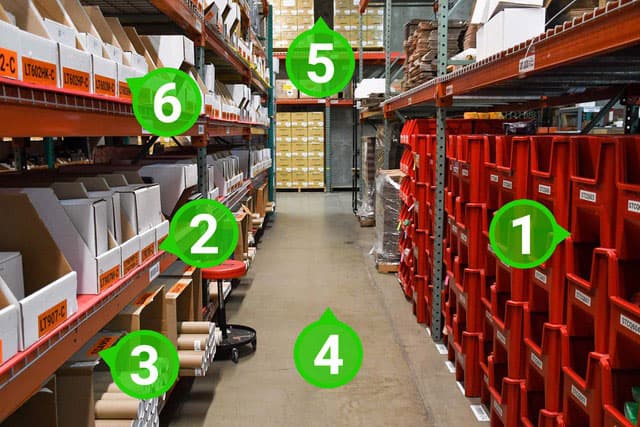# Understanding 5S Meaning: A Comprehensive Guide to Lean Methodology

## Introduction to Lean Methodology
Lean methodology, a systematic approach to enhancing efficiency and eliminating waste, has revolutionized the way industries operate. Tracing its roots back to post-World War II Japan, lean principles have transcended their origins, permeating various sectors worldwide. The methodology's relevance in today's fast-paced industrial landscape is undeniable, offering a blueprint for operational excellence.
## The Genesis of 5S
The 5S system emerged from the cluttered factories of Japan, where space was at a premium and efficiency was paramount. This philosophy, centered around organization and cleanliness, quickly became a cornerstone of lean thinking. Its adoption across the globe is a testament to its versatility and effectiveness in diverse working environments.
### First S: Seiri (Sort)
Seiri, or sort, is the foundational step in the [5S meaning](https://www.creativesafetysupply.com/content/education-research/5S/index.html) methodology. It involves discerning necessary items from unnecessary clutter and disposing of the latter. This principle fosters a clutter-free workspace, paving the way for enhanced productivity and a safer working environment.
### Second S: Seiton (Set in Order)
Seiton, or set in order, takes organization a step further. It's about arranging necessary items so that they are easily accessible and can be quickly stored. This not only streamlines workflow but also reduces the time and effort spent on locating tools and materials.
### Third S: Seiso (Shine)
Seiso, or shine, emphasizes the importance of cleanliness in the workplace. Regular cleaning schedules are not merely about aesthetics; they are crucial for maintaining equipment, preventing malfunctions, and ensuring a quality work environment.
### Fourth S: Seiketsu (Standardize)
Standardization, or seiketsu, ensures that the first three S's are consistently applied. By developing standard operating procedures, organizations can maintain high levels of cleanliness, order, and efficiency.
### Fifth S: Shitsuke (Sustain)
Shitsuke, or sustain, is arguably the most challenging step. It's about cultivating discipline and a sense of responsibility among employees to maintain established standards. This requires ongoing training, communication, and a culture that values continuous improvement.
## The Interconnectivity of the 5S Components
The true power of the 5S system lies in its interconnected nature. Each component reinforces the others, creating a robust framework for operational efficiency. When implemented as a cohesive unit, 5S can transform an organization's culture and performance.
## Implementing 5S in Non-Manufacturing Environments
The versatility of 5S extends beyond the factory floor. Service providers, healthcare institutions, and educational facilities have successfully adapted the principles to enhance their operations, proving the system's adaptability and broad applicability.
## Overcoming Challenges in 5S Implementation
Resistance to change is a common obstacle in 5S implementation. To overcome this, leaders must communicate the benefits effectively, provide adequate training, and demonstrate commitment to the process. Sustaining momentum is crucial for long-term success.
## Measuring the Impact of 5S
The effectiveness of 5S can be measured through various metrics, both qualitative and quantitative. From improved safety records to increased productivity, the benefits are manifold. Organizations must establish clear metrics to track progress and drive continuous improvement.
## Advanced 5S: Beyond the Basics
For organizations looking to deepen their lean journey, integrating 5S with other lean tools can yield even greater results. The incorporation of technology, such as automation and data analytics, can further enhance the system's efficacy.
## Case Studies: Success Stories of 5S Implementation
Numerous organizations have reaped the rewards of 5S, with case studies highlighting significant improvements in efficiency, quality, and employee satisfaction. These success stories serve as inspiration and a roadmap for others embarking on their 5S journey.
## Conclusion
The enduring relevance of 5S in fostering a culture of continuous improvement cannot be overstated. As industries evolve, the principles of 5S remain a constant beacon guiding organizations towards operational excellence and sustainable growth. The future of lean and 5S is bright, with ongoing innovations ensuring its place at the forefront of business strategy.